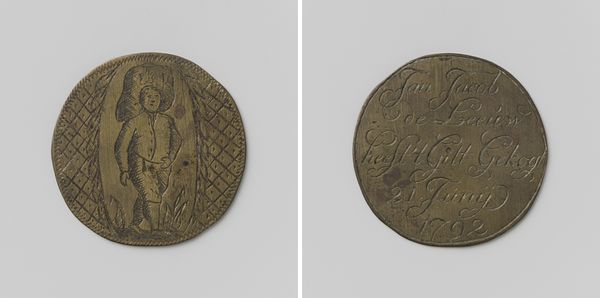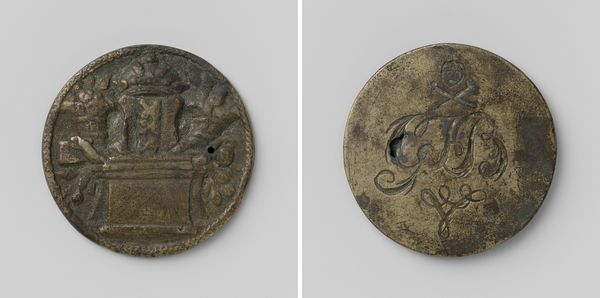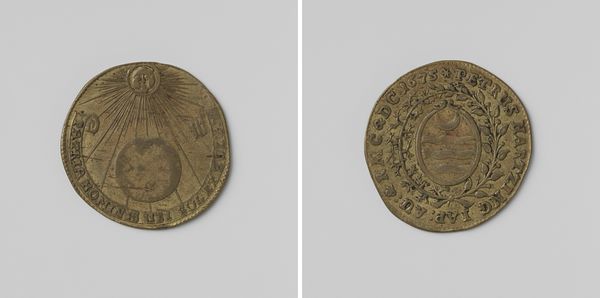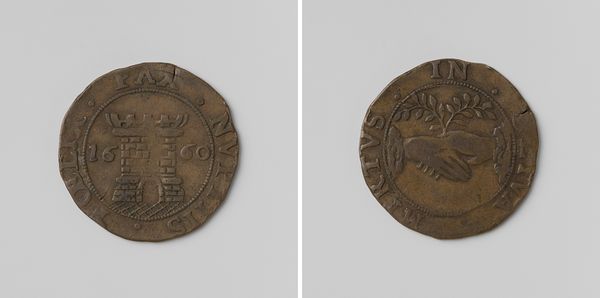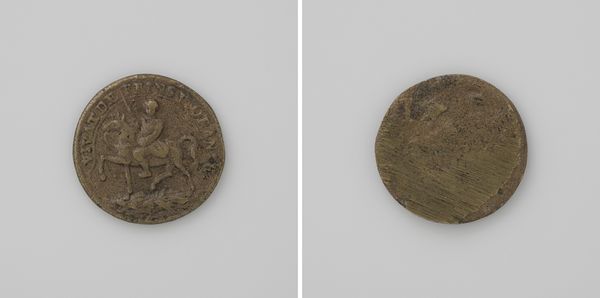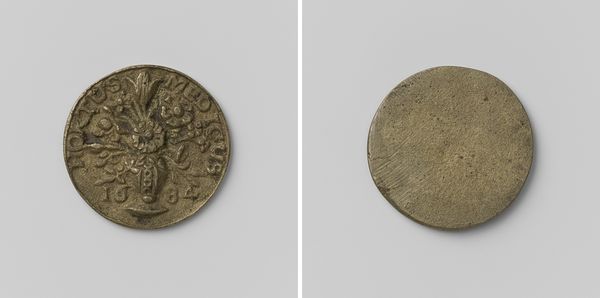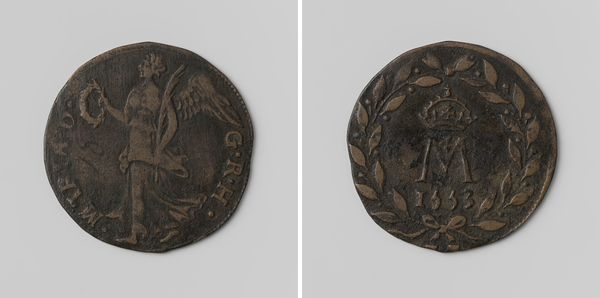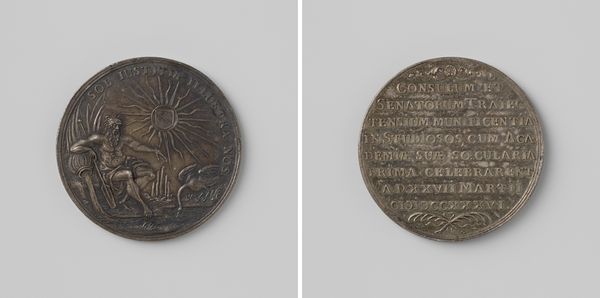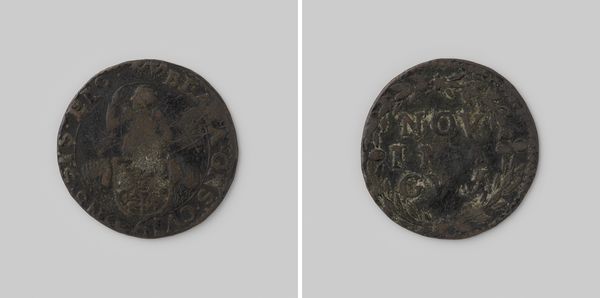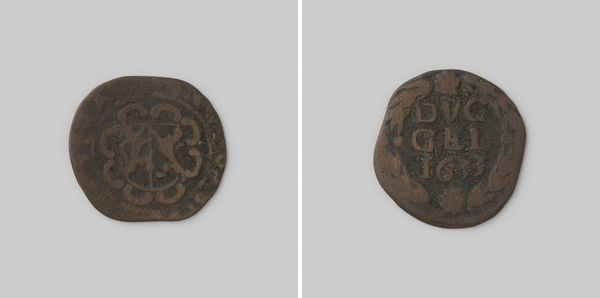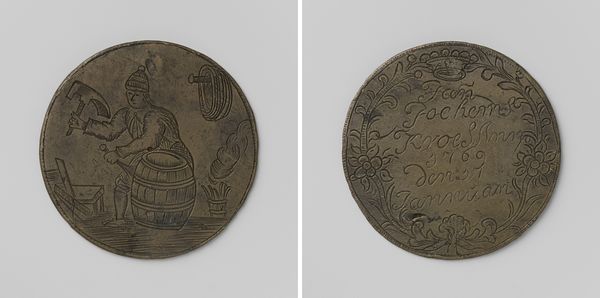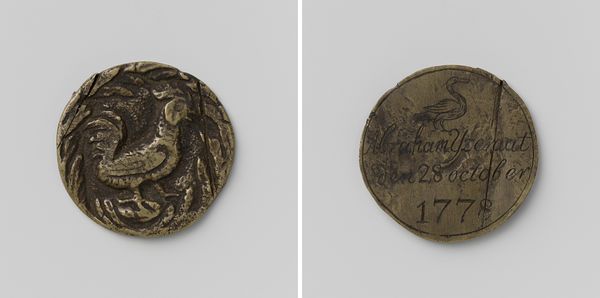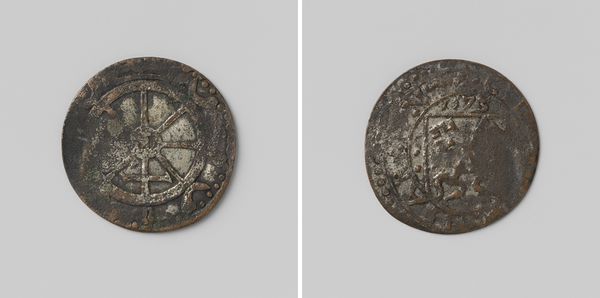
Korendragers- en -stortersgilde van Amsterdam, gildepenning van Hendrik Egelink 1793
0:00
0:00
carving, metal, relief, bronze, engraving
#
portrait
#
decorative element
#
carving
#
neoclassicism
#
metal
#
relief
#
bronze
#
round circular shape
#
engraving
Dimensions: diameter 3.3 cm, weight 3.86 gr
Copyright: Rijks Museum: Open Domain
Curator: This is a guild medal from 1793, specifically a guild token. It was crafted for Hendrik Egelink's entry into the Korendragers- en -stortersgilde of Amsterdam – that’s the Corn Handlers’ and Dischargers’ Guild. Editor: It's remarkably simple in its composition. I'm struck by the use of engraving and the contrast between the figure on one side and the inscription on the other. The subject appears rather diminutive, encircled by this ornate border that doesn't seem to quite match him. Curator: These tokens were like membership badges; this would mark Egelink's admission. The Guild held considerable social and economic sway. Tokens signified your place and participation in this important trade network. Editor: From a formal perspective, it’s interesting how the artisan played with positive and negative space. The figure appears almost childlike, placed against dense, almost overwhelming foliate carving, really drawing focus on this individual and how important it must have been. Curator: The Corn Handlers’ Guild would’ve had deep roots in Amsterdam’s political landscape. It governed standards, settled disputes, even looked after members' families. Holding such a token announced belonging and protection within the city. Think of this as more than simply possessing membership. It signified social standing and rights. Editor: It’s fascinating that an object so small contains so much intricate work. I notice the craftsman meticulously formed the letters and portrait. These features emphasize balance of this design within the physical round form. It has something powerful in this tiny frame. Curator: Precisely! These tokens offered protection within the complex societal structure in Amsterdam in the 18th-century, at a time when guilds offered so much to everyday life. This wasn't solely about aesthetic decisions, however skillful the execution may have been; but what it represented for those societies at that time. Editor: Thank you for that wonderful social framework; you've successfully recontextualized the object within society. On my end, I leave with more awareness about craftsmanship which seems as strong as a badge on the human scale or as something very important and permanent across historical space and time.
Comments
No comments
Be the first to comment and join the conversation on the ultimate creative platform.
